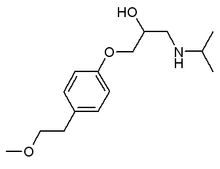Source: Annals of Internal Medicine, 2003;139;1009-17.
The American Academy of Family Physicians (AAFP) and the American College of Physicians (ACP) have released a joint guideline on the management of new-onset atrial fibrillation. They stress that clinicians should focus on controlling heart rate rather than heart rhythm in most patients using beta blocker or calcium channel blocker therapy, and recommend indefinite anticoagulative therapy to reduce the incidence and risk of stroke.
These clinical guidelines are the result of an 18-month collaboration between the AAFP and ACP to develop an evidence-based recommendation on the optimal treatment for atrial fibrillation. The recommendations are targeted to internists and family physicians dedicated to primary care.
"The traditional approach of physicians to treating atrial fibrillation is to do what we can to get patients back into sinus rhythm and to try to keep them there," said Michael LeFevre, MD, MSPH, co-chair of the AAFP-ACP Panel of Atrial Fibrillation. "Clinical data now show that the preferred approach for most patients with atrial fibrillation is to focus on controlling heart rate and preventing stroke with anticoagulative therapy, as opposed to making attempts to restore sinus rhythm."
Atrial fibrillation is the most common of the arrhythmias. It is more common in older patients, and jumps from a prevalence of 1% in those under age 60, to over 8% in those age 80 or older.
Symptoms of atrial fibrillation typically include a fluttering sensation in the chest, lightheadedness, shortness of breath, or chest pain. Some patients, however, have no symptoms. Atrial arrhythmias are different than ventricular arrhythmias, which can result in sudden cardiac death unless immediately converted into normal rhythm with an electrical defibrillator. While atrial arrhythmias are not as dangerous, they can increase an individual's risk for thromboembolic disease.
Traditionally, clinicians have focused treatment of atrial fibrillation on restoring the heart's natural rhythm with pharmacologic therapy. The new guidelines are a significant departure from that, noted Dr. LeFevre.
"According to the data that are now available, controlling heart rhythm is not superior to controlling heart rate to reduce complications and death. Furthermore, the side effects of medications that are currently used to keep patients in normal rhythm may outweigh their benefits," said Dr. LeFevre, who is also professor of family and community medicine at the University of Missouri-Columbia.
Heart rate control can be achieved with a variety of agents, including the beta-blockers atenolol (Tenormin) and metoprolol (Lopressor, Toprol XL), and the calcium channel blockers diltiazem (Cardizem CD) and verapamil (Calan, Isoptin). Digoxin has only been shown to be effective for rate control when patients are at rest, and is only recommended as a second-line agent.
"This is not to say that no patient needs conversion. Roughly 6% will need to be converted due to symptomatic manifestations and other risks," said Dr. LeFevre.
For patients who choose cardioversion to normal heart rhythm instead of rate control because of symptoms, electrical or medical cardioversion is recommended, but indefinite pharmacologic treatment to maintain normal rhythm after cardioversion is not recommended in most patients.
The recommendations also state that patients with atrial fibrillation should receive chronic anticoagulative therapy using adjusted-dose warfarin unless they are at low risk for stroke or have contraindications to warfarin therapy, including thrombocytopenia, recent trauma or surgery, or alcoholism. Although the guidelines state that aspirin may be useful in patients with atrial fibrillation and a low risk for stroke, the evidence was found to be inconclusive to recommend its use.
These recommendations are only for patients with new-onset atrial fibrillation, stressed Dr. LeFevre.
"It does not apply to patients with postoperative or post-MI atrial fibrillation, those with class IV heart failure, those already taking antiarrhythmic drugs, or those with valvular disease," he said.
Take Home
In new-onset atrial fibrillation patients:
* Focus on controlling heart rate and preventing stroke with anticoagulation therapy
* Controlling heart rhythm is not superior to controlling heart rate.
* Adjusted-dose warfarin is recommended unless the patient is at risk for stroke or other contraindications.
COPYRIGHT 2004 Advanstar Communications, Inc.
COPYRIGHT 2004 Gale Group



